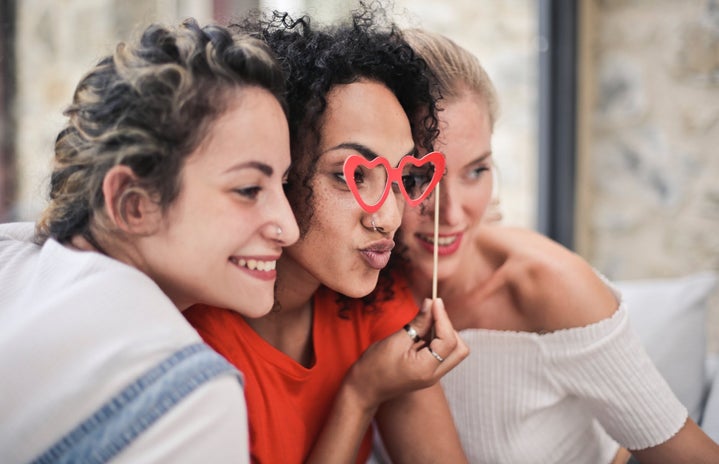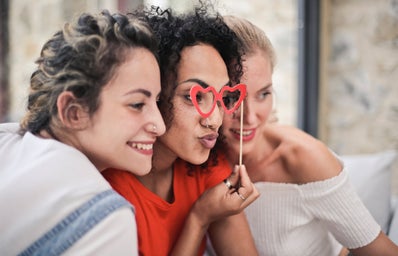I would like to start off by saying that body acceptance is happening right now in our world, and it is amazing!
There is nothing left for people to doubt with a new range of Barbie dolls coming out with 4 new different body types, to even the notorious brand Victoria’s Secret. Victoria’s Secret has been forever labeled as a “skinny girls” brand since they only ever show stick-thin models, but now the brand has seen the error of their ways and has jumped onto the bandwagon and changed their modeling standards to include women of all shapes, sizes, and even ethnicities, which is pretty cool, to say the least.
Even with all of these new things becoming acceptable, the journey to having body acceptance is far from over. This is because of this notion that there is a “good” fatty and a “bad” fatty. If you compare the definition of what ‘acceptability’ was in regards to bodies today to what it was almost ten years ago, you can see that the definition has definitely broadened and that broadening has come to include some fat people.
Whereas years ago, if you were a size 16 woman with an ample bosom you were considered too chunky for comfort. But now, these proportions are seen as ‘acceptable’ to the point that they have even been celebrated. Some of the world-famous campaigns, like the Dove Real Beauty campaign, as well as some thicker models beginning to grace the covers of magazines and runways, are trends that reflect this change.
And this is great news! Surely living in a society where a broader range of bodies is seen as ‘acceptable’ is a good thing. Right?
Not exactly. Because while some people who were once seen as fat are now deemed ‘acceptable’ there are others out there who are still deemed ‘unacceptable’. This is where the division of a “good” fatty and a “bad” fatty comes into play.
So, I know you are probably wondering what I mean when I say “good” fatty. To define this, think about conversations that you have had about bodies (this could be your own, or somebody else’s) you may have had in the past. Do any of these phrases sound familiar?
“I don’t mind my jelly, but I wish more of it were in my boobs or butt.”
“He’s overweight, but he exercises all the time, so it is okay.”
“I’ve always been a little on the chunky side, but it is okay because I am in a loving and committed relationship.”
“You’re pretty chunky, but it is okay because you are working hard to lose weight, and that is the important thing.”
These are all examples of “good” fatty. Notice how all of the sentences are worded, or could be reworded to start with “Fat is okay, but…” or “Fat would be okay if…” To be a “good” fatty, there has to be some justification; a reason that excuses or counterbalances why there is fat there.
This is where things get problematic because, in each of the scenarios described, fat is still being seen as an inherently bad thing and is still treated like an obstacle that needs to be overcome.
If fatty can not be seen as meeting the criteria for a “good” fatty, then they might try wishing that they could, and, since fat is still being acknowledged as a bad thing, these people are still on their way to the direction of a “good” fatty, even if they do not manage to get all the way there.
This phenomenon of excusing a person’s fat, counterbalancing a person’s fat, or even expressing unhappiness at another’s person’s fat, or just any way of treating fat as the enemy, has become too pervasive in our society.
There have even been reports of strong supporters for the fat acceptance movement saying that they still felt a need to explain their fatness with declarations about their love for vegetables or rigorous workout regimes. There should be no need for this. It is important to acknowledge that excusing your fat or anybody else’s fat is not fat acceptance. It is not even body acceptance or self-acceptance, and it is most definitely not radical self-love.
It would be better to say that the whole ‘good’ fatty/’bad’ fatty phenomenon is nothing more than a smokescreen. By outwardly showing acceptance of overweight bodies, then it looks as though society is moving towards total acceptance of all bodies in general. In actuality, this is another way of placing mortality on elements of people’s bodies and then declaring those bodies as “right” or “wrong”.
Imagine that instead of fatness, this article was about the acceptance of long hair. Just imagine a world where people were being scrutinized for having hair lengths that were not within the range that has been deemed ‘acceptable’. Think about all of the people trying to defend their long hair or the long hair of their loved ones. They would make declarations like, “It’s long now, but she is working hard to get it cut, and she will get there eventually.” Although this is a rather radical example, you get the picture. It sounds incredibly ridiculous that the length of a person’s hair could be viewed as a way of telling how decent of a person they are. Does it not sound discriminatory? So why should fat be viewed differently?
In the interest of trying to promote some self-love, I would like to offer up an alternative to this whole ‘good’ fatty, ‘bad fatty lingo: Being fat is not always good, but being fat is not always bad. Fat has no moral value on who you are as a person. The amount of fat that you may have is not going to determine if you turn out to be a good person or a bad person. It just makes you, you.
Girl Code: It is OKAY to be fat, no matter how fat you are. The sooner that society is able to stop attaching moral value to fat, or anything that makes us different, then the sooner that we will achieve self-love, everybody, and every body.


